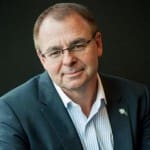Not For Profit 'Peak Body'! To Be or Not to Be?
12 November 2001 at 12:11 pm
Does Australia’s large and diverse third sector need a Peak Body to represent ALL its interests and provide a point of reference for ALL Government interaction and liaison? Our Pro Bono Australia Instant Poll suggests an overwhelming ‘yes’ to that question.
However, how it can be achieved, based on overseas experience, is an altogether different kettle of fish!
And according to social researcher Mark Lyons, a Professor of Social Economy at the University of Technology in Sydney, who is the first commentator in a series of PBA articles on an Australian peak body; the prognosis is bleak.
In fact he says given the current relationship between government and the third sector in Australia there is no sign that a representative body might emerge to represent organisations across several fields.
Professor Lyons used the experience of the UK and Canada to highlight his concerns in a speech delivered to the Volunteering NSW Conference in May this year.
In his paper he looked at the preconditions in both England and Canada which led to conscious attempts to form a Peak Body across the many different parts of the third sector.
He says by way of background that by the early 1990s relationships between governments and the third sector of both countries were bad. Government funding policies in particular were at the heart of complaints, although in Canada there was also concern about broader charitable status.
‘Within the third sector, a peak body emerged to represent the interests of organisations working across a large number of fields. In the United Kingdom’s case, it was the National Council of Volunteer Organisations which expanded its membership beyond the social services and local community groups to encompass some parts of the arts, recreation and health.
In Canada, it was the formation of the Coalition of National Voluntary Organisations which gave the community services field a single voice, and then the formation of the Voluntary Sector Round Table with a somewhat wider representation across the sector than the NCVO.
In both cases, the core drive came from community service Not for Profit peaks and in neither case was anything like the full range of the third sector represented. However, there was a conscious attempt to form a body that spoke for many different parts of the sector. Constructing such a voice was not an easy task.’
Professor Lyons says research was undertaken that demonstrated the size and contribution of the sector and the extent of volunteering and giving, and the newly formed peak bodies undertook major public reviews of the sector and its relations with the government.
As well he says in each country there were two or three large charitable trusts or foundations that made a major contribution to the peak body developments.
And he says within government, at the ministerial level, (in the UK initially within the Labour Party while in opposition), there were some ministers who were sympathetic to the third sector and who recognised that its health and wellbeing were central to the wellbeing of the wider society. Within the third sector there was a clear recognition that organisations themselves needed to improve their governance and their accountability and to build their core capacity.
Looking to the Australian situation Professor Lyons says relations between government and the third sector here are certainly bad, with the quality of that relationship varying across jurisdictions. He says the variation is not only across departmental areas but also across the community services and health industry they are rarely if anything but bad.
He says in education, by contrast, and to a lesser extent in sport, relations are somewhat better.
In his May paper Professor Lyons explained the current state of play in Australia which offers a less than optimistic outlook.
He says within the community services industry, the forum of non-government organisations, nationally and within New South Wales, the forum of non-government agencies (FONGA) provide a meeting point for a number of community service peaks, but that is all. A somewhat wider grouping, chaired by ACOSS, existed during the lead-up to the GST, but there was little commitment by its members to formulating a policy position for the whole sector.
In our last edition of Pro Bono Australia we reported that during the election campaign ACOSS, along with 60 leading agencies, called on the major parties to develop a formal agreement that better defines the Federal Government’s relationship with the community sector.
Professor Mark Lyons goes on to say that there is only now a limited amount of research demonstrating the dimensions of the third sector and there is no likelihood of a third sector-initiated commission to review itself!
Part of the reason for this, he suggests, is that none of Australia’s charitable trusts are prepared to make a significant, long-term commitment to building the knowledge base, the capacity of and representative structures for the third sector.
He points out that in both England and Canada, the willingness of two or three large foundations to encourage, even initiate third sector institutional growth was a crucial precondition of the development of better relations between the third sector and government.
In response to the ACOSS call for a government /community ‘compact’ Professor Lyons says it is only involving a ‘bit’ of government and a ‘bit’ of the sector which is a retrograde step.
He says he fears that many who call for a peak body are not thinking of the third sector but only a small part of it.
He says the best model is the Canadian Round Table. The Not for Profit sector still awaits its invention in Australia.
Professor Lyons concludes that it is hard to imagine either government or the opposition offering the kind of recognition of the third sector’s contribution to the well-being of all Australians that both the UK and Canadian governments have offered.
He says while there are important parts of the third sector that have begun a process of renewal and capacity building, they are, on the whole, rare.
And finally he says in too many parts of the sector, there is a tendency to wait for the government to tell them what to do.
In the next edition of Pro Bono Australia’s e-Newsletter we will look at other key players in the Not for Profit sector and their comments on a peak body. If you would like to have your thoughts included in future articles on this topic email Lina Caneva at probonoaustralia.com.au.
Don’t forget you can also air your views on our web site Forum at probonoaustralia.com.au.
We look forward to a wide and interesting debate. By the way, the Instant Poll results on a peak body are Yes 69%, No 10% and More Information 21%.







